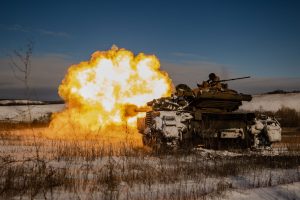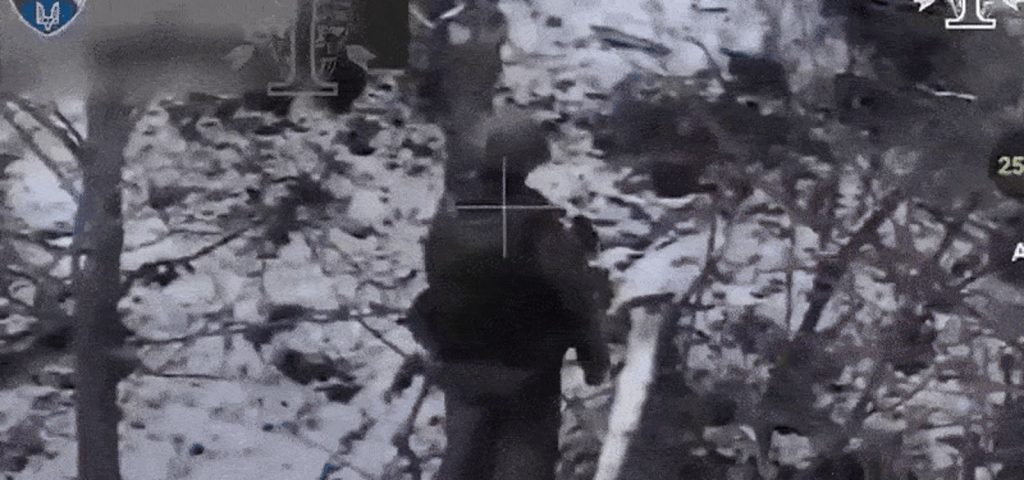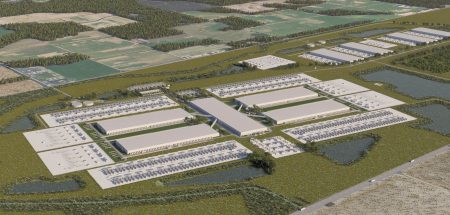The frigid landscape of Kursk Oblast in western Russia became the battleground for a fierce, eight-hour clash between a small contingent of Ukrainian special operations forces and a much larger North Korean force on or around January 12th. A dozen or so commandos from the Ukrainian 8th Special Operations Regiment, bolstered by supporting units, engaged scores of North Korean soldiers in close-quarters combat near the hamlet of Kruglenkoe. Employing sniper rifles and drones, the Ukrainians inflicted significant casualties on the enemy before extracting themselves in armored trucks, retreating to the relative safety of the main Ukrainian line just half a mile east. While the regiment claimed no casualties, echoing the legendary stand of the Spartans at Thermopylae, the true nature of the victory remains ambiguous.
While video evidence suggests heavy losses among the North Koreans, contributing to the reported 30% casualty rate suffered by the 12,000-strong North Korean 11th Army Corps since their October deployment to Kursk, the tactical significance of the engagement is less clear. The North Korean corps, representing a fifth of the combined Russian and allied forces in the region, is tasked with eliminating a 250-square-mile salient carved out by 20,000 Ukrainian troops during a surprise offensive in August. Despite inflicting losses on the North Koreans, the Ukrainian commandos’ action doesn’t guarantee a halt to the overall Russian and North Korean advance, which has seen recent gains on the western edge of the salient, threatening settlements like Viktorovka and Nikolskiy.
This localized skirmish highlights the broader strategic challenges facing Ukraine in the ongoing conflict. The Kremlin faces increasing strain on its manpower resources as it struggles to maintain a 600,000-strong force across the front lines in Ukraine and Kursk. The strain is evident in practices like deploying wounded soldiers from units like the 20th Combined Arms Army back into battle, forming vulnerable “crutch battalions” easily targeted by Ukrainian drones. However, Russia may offset these manpower issues by leveraging North Korea’s vast military reserves, potentially deploying additional troops to Kursk in the coming months, according to Pentagon sources.
In stark contrast, Ukraine faces dwindling support from its allies. Germany’s governing party has stalled a substantial $3.1 billion aid package, while the Trump administration in the United States has frozen foreign aid and is considering significant cuts to European military operations. This potential withdrawal of support leaves Ukraine in a precarious position, facing a potential gap in crucial aid just as the last tranches of previously approved U.S. assistance arrive. The upcoming February elections in Germany further complicate the picture, adding uncertainty to the future of German contributions to the war effort.
The Ukrainian commandos’ tactical success in Kursk, though commendable, masks a strategically troubling reality. While they inflicted heavy losses on the enemy in a single engagement, their ultimate retreat underscores the daunting challenge of facing a numerically superior force bolstered by a potentially endless supply of North Korean reinforcements. The dwindling support from international allies exacerbates this challenge, raising concerns about Ukraine’s ability to sustain a protracted conflict against a resurgent Russian offensive.
The Kursk skirmish epitomizes the complexities of this ongoing conflict. It showcases the bravery and effectiveness of Ukrainian special forces while simultaneously highlighting the vulnerability of a smaller force facing a larger, well-supplied adversary. The incident serves as a stark reminder of the precarious balance of power in the region and the critical role international support plays in shaping the outcome of the war. The future of the conflict hangs precariously in the balance, dependent on factors ranging from the evolving geopolitical landscape to the resilience and resourcefulness of the Ukrainian forces on the ground.










